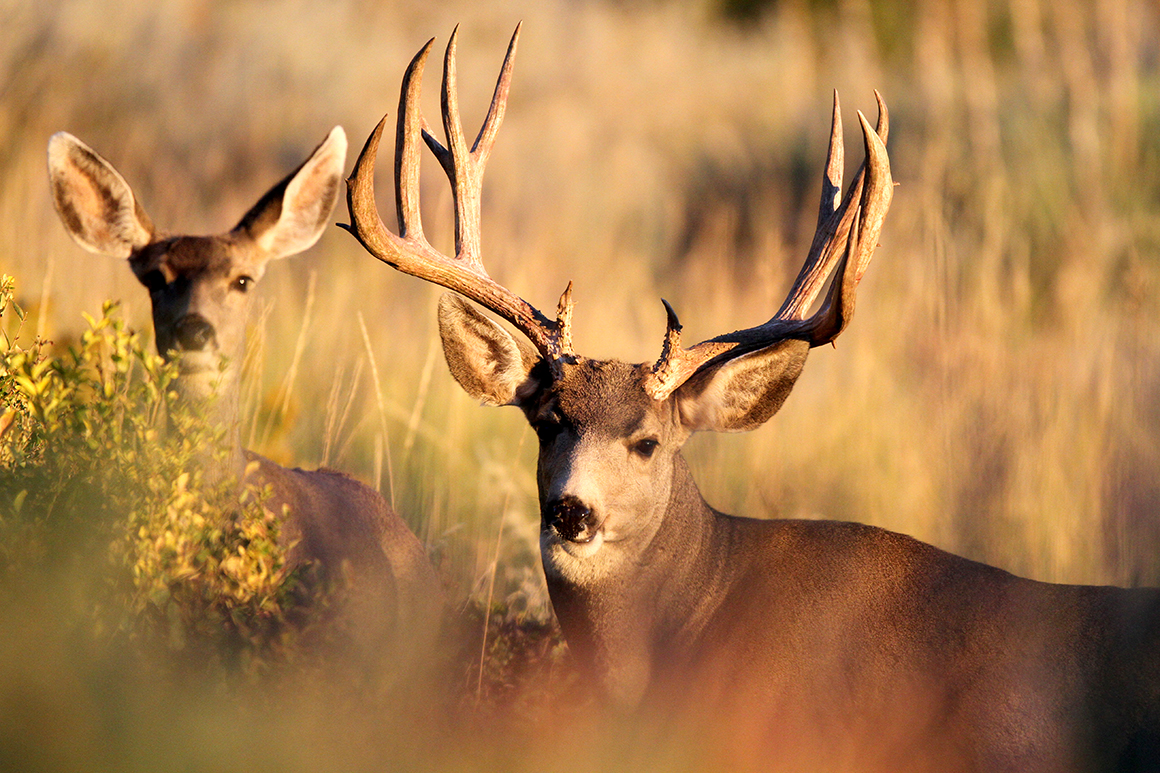!No Mas “Mule”!
Considered by many to be the best hunting-shooting writer of the 20th century, Jack O’Connor had a pet peeve. (In truth crabby ol’ “Cactus Jack” had a menagerie of them; but this one’ll do for the time being.) In a late article of his he took rare exception to labeling, in print, the mule deer a “mulie,” a barbarism he equated with calling a sheep a “sheepie” or an elk an “elkie,” which would never be permitted to occur. All right. He wanted to give the big deer its due. What he may have overlooked, though, is that the word could also represent recognition of the affection writers, and hunters, hold for the species, expressed in the hypocoristic.

Theodore Roosevelt never, to my knowledge, used the word “mulie,” and certainly never “elkie,” believing that “stately and splendid deer” to be “the lordliest of its kind,” which makes the mule deer at least the most baronial. And when you trace its lineage, you find a tangled tree, indeed.

Start with an ancestral roe deer tens of millions of years ago, migrating from Asia to this continent. Add a certain amount of evolution, and you get to the whitetail, at over 3-million years old, considered to be the oldest large mammal in North America. Meanwhile in South and Central America the small, spike-antlered brocket deer came into being; and from out of it, north along the Pacific Coast, appeared the black-tailed deer. A hundred-thousand years, at least, of glaciation kept the whitetail and the blacktail separated until the end of the last great Ice Age around 10,000 years back when they met and from that meeting came the crossbreed, the mule deer, which exhibited what is known as “hybrid vigor” by being larger-bodied and more grandly antlered than either of its fore-bearers–and at about 7,000 years old the youngest large mammal on the continent: Native Americans had been here for millennia before the mule deer evolved; the domestic dog has existed at least twice as long as the wild mule deer.
Without question, the glory days of mule-deer hunting were the 1950s and ‘60s. While the whitetail has profited exorbitantly from the land disruption in an urbanizing America– whitetail are well established in New York, New York, the town so nice they named it twice–the mule deer clings to the diminishing Western wilderness, where it can find it. The mule deer is still out there, though; so you go on hunting for it on mountains and in canyons.
Good optics are essential to mule-deer hunting, and the hunter who does not devote nearly as much time to glassing as he does to still-hunting is hampering himself. Invest in a decent, full-sized binocular–if you are hunting with a thousand-dollar-plus rifle and a $150 binocular, you are doing yourself a disservice. What should a good binocular cost new? Depends, as all things do; but arbitrarily the $350-to-$500 range is a good starting place. Look at it as an investment: Whatever you buy now, you are likely to want something better later, so why not cut to the chase? If you are looking for one product term, look for “fully multi-coated lenses” with the added quality of its being on all “air-to-glass” services. If a salesman doesn’t know what you are talking about, find one who does. Same for your scope.

Mule deer are pattern-able, so pre-season scouting is a great benefit to the hunter. Early October, when so many seasons open in the West and when the deer are at their most wary, is probably the hardest time to hunt them. As the month advances, the rutting instinct begins to color their behavior; but they won’t be a pushover at any time. A hunter needs all his best skills–absolute silence (those ears!), stealth, strictly reading the wind–but even if he spooks a buck and it stotts away in that pogo-stick gait, a hunter should stay ready as long as the deer is in sight, knowing it might well stop and look back, or that he can try to halt it with a loud whistle.
Mule-deer calibers run the gamut. Hunters have used the 243 Winchester at one end of the spectrum to 300 Win Mag at the other. There are considerations, however. A big buck can be pushing 300 pounds, not much smaller than a spike elk. Ranges can be cross-canyon and considerable. Wind is almost guaranteed to be a factor.
If a hunter has to pick one most useful, best-performing cartridge for mule deer, he could do worse than to take a page from Jack O’Connor. It is almost as if the 270 Winchester and mule deer were made for each other. It gives a hunter velocity, range, and energy that are more than enough for hunting mule deer, all in a generally lighter to pack, lighter recoiling rifle. The 130-grain Browning BXS 270’s a great choice, but I might actually make a case for the 145-grain Browning BXC’s being that much better. Just make sure the bullet goes where it is supposed to; and no matter how fond you are of it, don’t call it a “mulie”!
Follow Browning Ammunition’s social media channels for more hunting and shooting tips and updates on Browning Ammunition supported events and promotions on Facebook, You Tube, Instagram and Twitter.



